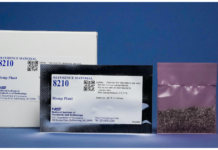In a world where people are increasingly looking for natural remedies to treat their ailments, cannabidiol (CBD) is becoming the go-to choice across numerous demographics. But many CBD industry marketers find themselves stuck in legal troubles and difficulties when trying to advertise online because of strict restrictions — a problem that can be resolved with the right knowledge about the digital marketing landscape.
CBD Marketing Trends and Pain Points
The CBD market is booming and there are plenty of options for consumers. From oils, CBD beverages (both alcoholic and non-alcoholic), edibles, topicals, capsules, and even pet products, the industry currently offers a substantial range of products in a multitude of formats.
The current enthusiasm for anything CBD-infused marks a major trend in the online CBD marketplace, an indicator of what’s coming. This category’s diversity will continue to increase as more companies introduce hyper-focused formulations to target customers with specific use cases as research continues into minor cannabinoids found in hemp plants, such as cannabinol (CBN), cannabigerol (CBG), cannabidiolic acid (CBDA), and other active compounds.
The CBD market is projected to grow at an incredible rate, with forecasts predicting that by 2025 the U.S.-based industry will be valued at around $20 billion, and its market size is predicted to reach $49.22 billion by 2028. But while there’s been some consolidation in the industry, don’t think competition has slowed down.
Who is the target market for CBD?
More people are demanding the natural supplement significantly according to a recent survey. The survey results show that familiarity with CBD is growing, as 83% of Americans report being at least somewhat familiar with the product. The survey also found that 50% of Americans have used CBD in the past year. Among CBD users, about half (48%) use CBD at least once a week.
CBD marketers face additional challenges that are unique to cannabis. In the world of CBD, they must walk a tightrope between government regulations, compliance with digital platforms’ rules, and swaying public perceptions.
Can You Market CBD on Facebook and Other Social Media Platforms?
To sell CBD online, you need to obtain the appropriate licenses, dial in on your legal allowances, and be aware of laws that vary by state so you avoid any penalties or legal mishaps.
Now the million-dollar question is can you advertise your CBD products on Facebook, Snapchat, TikTok, and other social media platforms? Yes, you can. However, advertising on social media is a major pain point for CBD marketers, so it’s crucial you understand the various platforms’ guidelines and where you can and cannot launch a CBD paid advertising campaign. Making the right decisions when it comes to advertising your CBD product can be challenging.
The world’s most widely used social media platform, Facebook’s advertising department still generally classifies CBD as an “unsafe substance,” as referenced in its list of Prohibited Content. Facebook relaxed the rules in 2019 to allow CBD companies to advertise if they don’t mention “CBD” in their ads or where they link including videos, images, and landing pages. By 2021, Facebook eased these restrictions for hemp-based topical products but not for anything that can be consumed. Today, the Facebook platform continues to be a mixed bag for hemp vendors. Many sellers report that the algorithm still rejects their ads. These consuming rules can create a bit of a challenge when a Facebook user doesn’t definitively know what they are seeing and possibly buying.
Snapchat is a favorite destination amongst millennials and Gen Zers age groups. The less restrictive rules allow for creativity, but there are still some boundaries that should not be crossed to maintain authenticity on this social media platform. Snapchat prohibits glamorizing the product by showing smiling people in ads, not saying what the product does, featuring any testimonials, or including reviews from consumers or reputable media outlets — which means you can’t lie about your product! So, again, Snapchat’s users don’t know what they are buying or how to distinguish between quality and questionable products. In addition, CBD companies face inconsistent interpretation and enforcement of rules which can spur costly and time-consuming revisions. But one thing worth noting about Snapchat: it allows the use of the letters CBD.
Digital Strategies for CBD Marketers
As the CBD market continues to heat up and more companies enter the arena of hemp-based products for health benefits, digital marketers need to grow their brands’ awareness while staying within the restrictions of social media platforms — but how?
With over 92 million daily active users in North America alone, Snapchat provides an opportunity for CBD brands to reach the younger generation. When advertising on Snapchat, brands can appeal to customers in ways that leave a lasting impression. For example, brands can utilize AR filters to give consumers a way of seeing their product in action or create engaging video content for the Spotlight or Discover pages on the app. Snapchat is a great advertising platform to reach a target audience because of its unique features. The templates that come with the app allow you to customize your message and make it more creative, which in turn will result in better ROI for advertisers who use this social media site regularly. Snapchat may be the ideal alternative for smaller companies looking to make their mark in an increasingly strict market. With more stringent policies and even a risk of having your entire business banned from running ads on Facebook or Google (though some CBD businesses have found a loophole to advertising on Google), this popular social media app remains one that marketers should consider when it comes time to promote CBD products online through advertising campaigns — especially those without large budgets at hand.
An efficient and effective way for marketers to advertise CBD on Facebook and other platforms is through programmatic. First and foremost — it’s allowed. Programmatic platforms are the ultimate way for CBD advertisers to find just about any audience. The smart use of programmatic strategies allows brands to dig deeper into multiple ad types including display, native, programmatic audio, preroll, and connected TV, and re-imagine core audience targets for better overall ad performance. Programmatic has fewer regulatory obstacles than other forms of digital advertising, making it exceptional in this field and enabling brands with valuable analytics on how they can improve future campaigns so that more people will be converted into loyal customers. The data provided enables CBD marketers to optimize campaigns and get the best possible results.
Your CBD online business is about finding your audience. For many aspects of marketing, the playbook remains similar to other products and industries even though leveraging paid search isn’t allowed within this space. SEO is one way that brands can capture leads across every stage in the customer’s journey toward purchase.
Consider content marketing at each stage
- At the top of the funnel, customers are likely looking for natural sleeping aids, fitness and injury recovery aids, stress reducers, or general well-being products.
- In the middle, you’ll find customers who know of CBD products for their use case.
- And at the bottom, customers may already know about you and your products and need extra encouragement to purchase.
And it’s important to remind past customers who have used your product before that you still carry those same offerings. Your paid marketing strategies at every stage are critical for promoting your CBD products. The three most important questions to ask when structuring your full-funnel, data-driven CBD marketing campaign are:
- Who do you want to reach?
- What do you want to say?
- What do you want them to do?
How To Measure and Track Your CBD Campaign Performance
Tracking success is an important part of any CBD marketing strategy. The metrics you use to measure your CBD campaign performance will be similar to that of any other brand and product, but there are some key differences when it comes down to tracking CBD ads. Make sure you’re getting the most out of your CBD campaign by measuring everything from revenue generated to attribution numbers for each channel — and don’t forget total spend. According to New Frontier Data’s Consumption Drivers report, 49% of consumers don’t have a preferred brand, which means there’s an opportunity for innovation among competitors. Utilize metrics to better understand user experience and the average lifetime value of each customer. Email sign-ups, the cost of new email sign-ups, and net new people are efficient means to gather your loyal base and see if any are detracting. Using digital marketing to promote your CBD products is an investment that will pay off for your short- and long-term goals. However, if you want the most from your CBD campaign and to ensure every dollar spent has a meaningful impact on revenue, follow up with campaigns after they’ve ended or been completed successfully.
CBD products are a fast-growing trend, unlike anything we’ve seen in a while. But some CBD marketers haven’t quite kept up with the times, despite growing consumer acceptance of these products. Regulations on many advertising platforms have created red tape in the CBD marketing space, so it’s important to understand where you can and cannot advertise as well as which outlets aren’t worth the effort. With the right digital marketing strategy, CBD brands can overcome these challenges and generate wide-scale brand awareness while getting more products into people’s hands.











[…] is particularly great news for cannabis brands that struggle with advertising restrictions from major online platforms like Google or […]
[…] workplace, doctor’s office, investor meetings, marketing campaigns, and more. In more mainstream advertising, the sexualization and objectification of women have been normalized, yet, when we try to control […]
[…] AI chatbot can search using text or images, generate images using natural-language descriptions, generate marketing plans and materials, generate budgets and launch schedules, and perform other marketing-related […]
[…] “participate in the promotion or endorsement of any brand, product, or service of an entity that produces or sells CBD products, as long as the entity isn’t a marijuana […]
[…] delta-8), and ingestibles (edibles, tinctures, capsules, etc.) remain prohibited. In addition, CBD advertisers must be certified by merchant-monitoring service LegitScript and comply with all applicable local […]
[…] is the backbone of great marketing, but very few cannabis marketers have actually mastered the principles of […]